These EC120Bs owned by Phoenix Heli-Flight out of Fort McMurray, Alberta came to us with a factory original panel which we upgraded to Garmin’s G500H TXi 10.6” touchscreen primary flight display, along with the Garmin GTN 650Xi touchscreen flight navigator. Most importantly, all of the equipment installed was either specially selected, or modified to be compatible with night vision goggles.
EC120 Gets Night Vision Capability
2011 Eurocopter EC120B Colibri
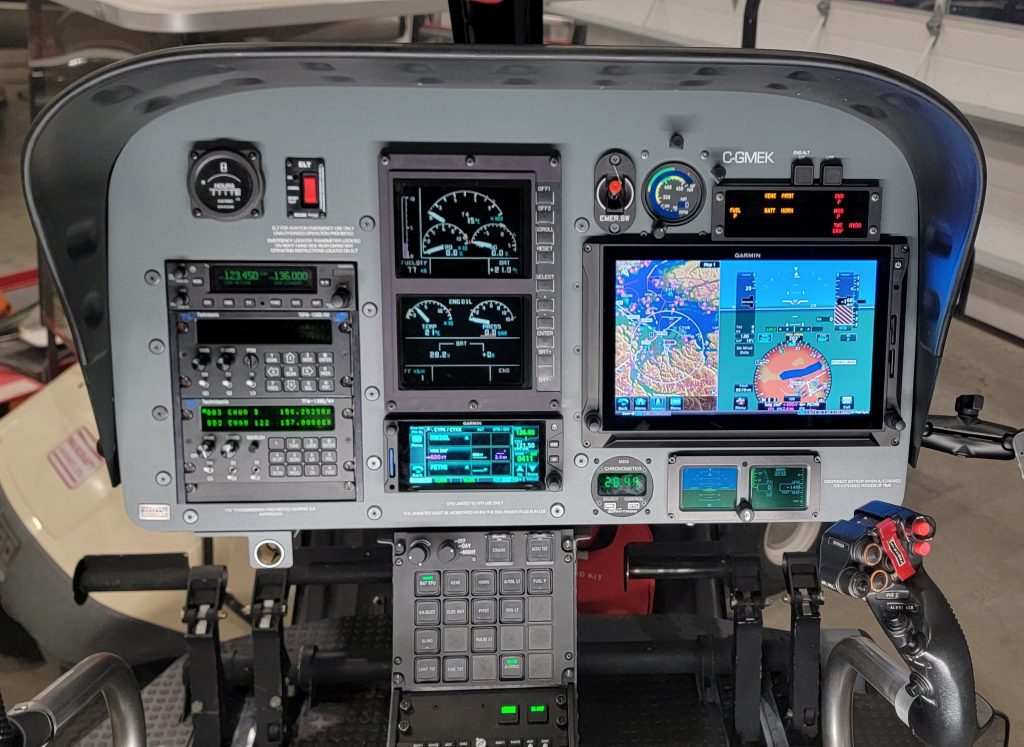
Aircraft & Owner:
The Eurocopter EC120B (nicknamed the hummingbird) is a single-engine light utility helicopter. Production ran from 1997 until 2017 with over 700 aircraft being produced. Phoenix Heli-Flight started in 1991 with a single AStar helicopter, now more than 3 decades later, they are a regional leader with a large fleet of helicopters operating from their main base and headquarters in Fort McMurray, Alberta. Phoenix provides services for a wide variety of industries from exploration and survey work, oil and gas support, to medevac and wildfire suppression. Phoenix Heli-Flight is proud to have a fleet with the capabilities to fly in almost any conditions to complete mission critical tasks.
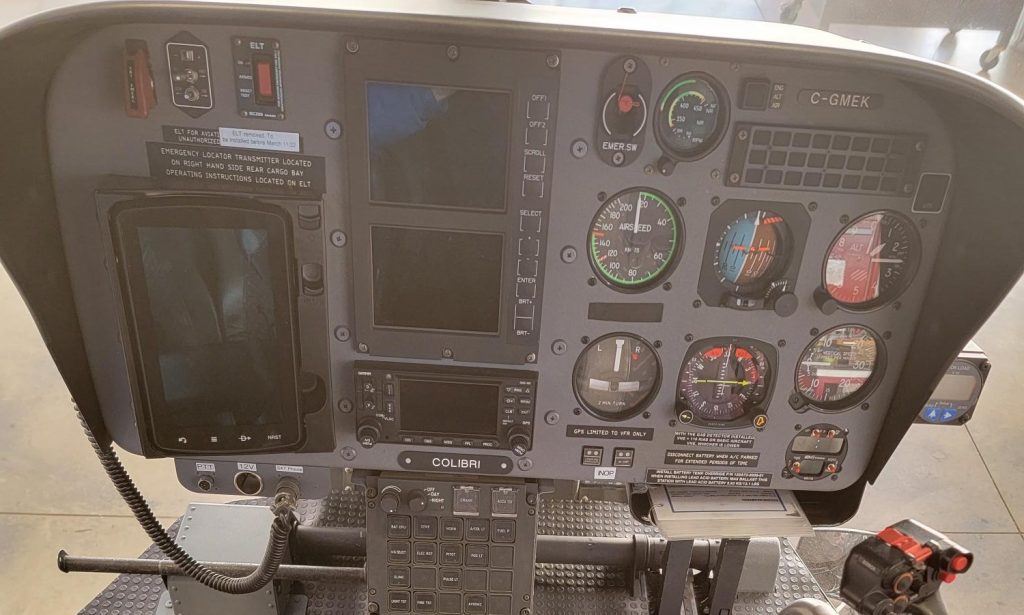
Need:
Having recently added this EC120B to their fleet, Phoenix Heli-Flight was looking to upgrade three to make them more capable for their mission profile. These upgrades were intended primarily to have an aircraft capable of night vision and simulated IFR flight for pilot recurrent and initial training. Specifically, this helicopter will be used to train pilots who will then operate Phoenix’s EC135 for the Local Helicopter Emergency Response Organization (HERO).
The Local HERO Foundation operates a twin-engine EC135 provided by Phoenix Heli-Flight, which at a moment’s notice, 24/7 will respond and provide emergency helicopter services for the people of Northeastern Alberta. Using this top-of-the-line aircraft, they enable emergency personnel to respond to medical emergencies, search and rescue missions, and other life-threatening situations. When called into action, the EC135 is crewed by two pilots, and two firefighter/paramedics from the Fort McMurray Fire Department. Equipped with a LIFEPAK monitor/defibrillator, oxygen supply, and medical suction system, this air ambulance can provide lifesaving treatment while enroute to a hospital. The roots of the Local HERO Foundation began in 1991 when Phoenix Heli-Flight began providing ad-hoc helicopter medevac services to the region, often to areas with limited or no road access for ground transportation of patients.
The modernization task for this project was replacing the standard instruments with a full glass panel display. The EC120B came equipped from the factory with a VEMD (Vehicle and Engine Monitoring Display) which is the pilot’s primary source of information on how the aircraft is running. This electronic display replaces the traditional engine instrument cluster and reduces pilot workload by making information easier to interpret. Pairing this system with a full glass panel primary flight display will make life even easier for the pilots.
With night vision technology becoming more and more mainstream and in demand in many aerial industries, Phoenix wants to stay on the leading edge and these three EC120Bs will allow them to bring much of their recurrency training in-house eliminating expensive travel time for pilots leaving the country to receive NVG training. Doing this would require modifying all the retained equipment to be safe to use with night vision goggles, as well as only installing night vision compatible units. We would use this helicopter as our design test bed before completing a total of 3. After we have every small detail figured out on the first machine, our efficiency on the following aircraft goes up significantly.
To make this helicopter night vision capable and safe, Maxcraft utilized our in-house Transport Canada Design Approval Organization (DAO) to engineer, design, and obtain and approve the supplemental type certificate covering the modifications which allow the use of night vision goggles on this airframe.
NEW EQUIPMENT LIST
| G500H TXi | Integrated Flight Display with SVT (Garmin) |
| GTN 650H Xi | Touchscreen Flight Navigator (Garmin) |
| FlightStream 510 | Wireless Cockpit Connectivity (Garmin) |
| MaxPanel | Custom Powder Coated Instrument Panel (Maxcraft) |
| GNC 255 | Aviation VHF Nav/Comm Transceiver (Garmin) |
| GTX335R | Remote Mount ADS-B “Out” Transponder (Garmin) |
| MD302 | SAM Standby Attitude Module (Mid-Continent Instruments and Avionics) |
| GTS 800 | Traffic Advisory System (Garmin) |
| TDFM136B | Digital VHF FM Transceiver (Technisonic) |
| GRA 55 | Radar Altimeter (Garmin) |
| JA94-N02A | NVIS Compatible Dual Audio Panel (Jupiter Avionics) |
| CP3i | Iridium Satellite Tracking and Communication Device (Outerlink Global Solutions) |
| M850 | Clock, Flight Timer (Davtron) |
| SH24-10 | GTS 800 Supplemental Type Certificate (Maxcraft) |
| SH24-9 | GRA55 Supplemental Type Certificate (Maxcraft) |
| SH24-8 | TDFM-136B Supplemental Type Certificate (Maxcraft) |
| SH14-50 | MD302 Supplemental Type Certificate (Maxcraft) |
| P-LSH23-049/D | Night Vision Limited Supplemental Type Certificate (Maxcraft) |
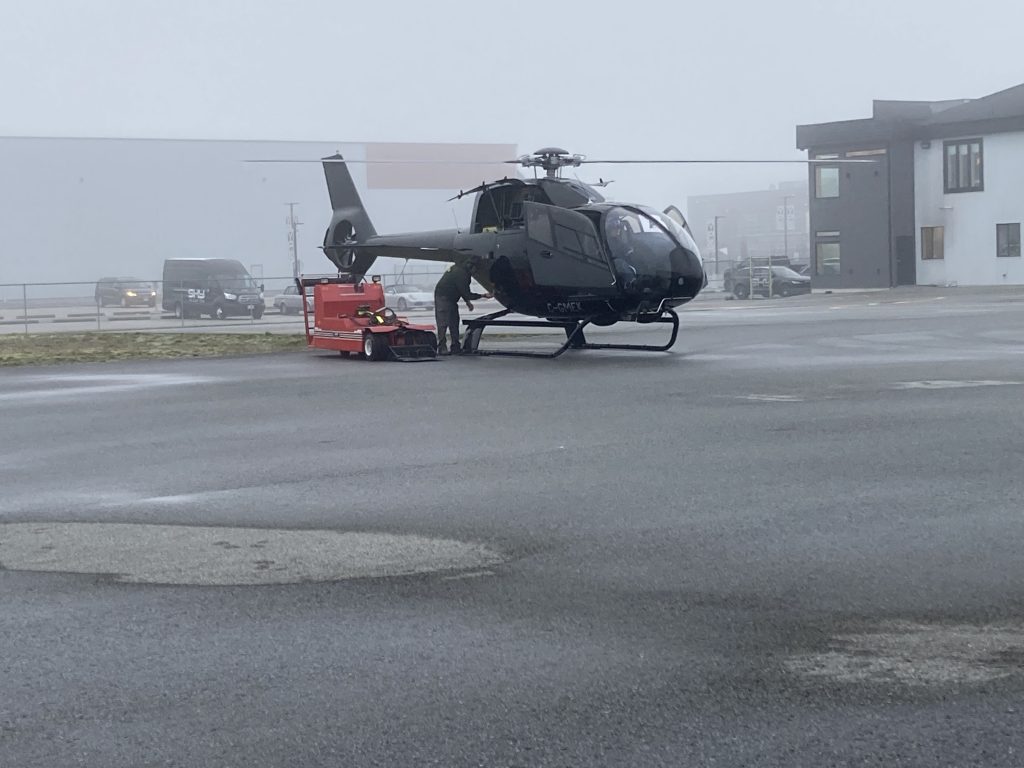
Maxcraft Solution:
The centerpiece of this installation is undoubtedly the G500H TXi primary flight display (PFD) from Garmin. This 10.6” touchscreen replaces the traditional six-pack of instruments providing the pilot with all the information needed to fly and navigate safely. Pairing perfectly with the G500H Txi is Garmin’s GTN 650H Xi. This 4.9” touchscreen display will be the primary GPS, communication transceiver, nav receiver, and multifunction display. Many of the remote mounted boxes are controlled by the GTN making it a single hub for a variety of different functions. Installed in the card reader slot of the GTN 650 Xi is Garmin’s FlightStream 510. This tiny SD card sized device adds Bluetooth and wifi connectivity to the GTN allowing pilots to pair their iPads and other devices directly to the GTN to transfer flight plans and other data between the aircraft and their electronic flight bags.
While modern PFDs, including the G500H TXi, are incredibly reliable, it’s a legal requirement to have a backup instrument. The MD302 “SAM” (Standby Attitude Module) from Mid-Continent Instruments saves panel space by displaying attitude, altitude, airspeed, slip, vertical trend, and heading in a small 2-inch dual screen display.
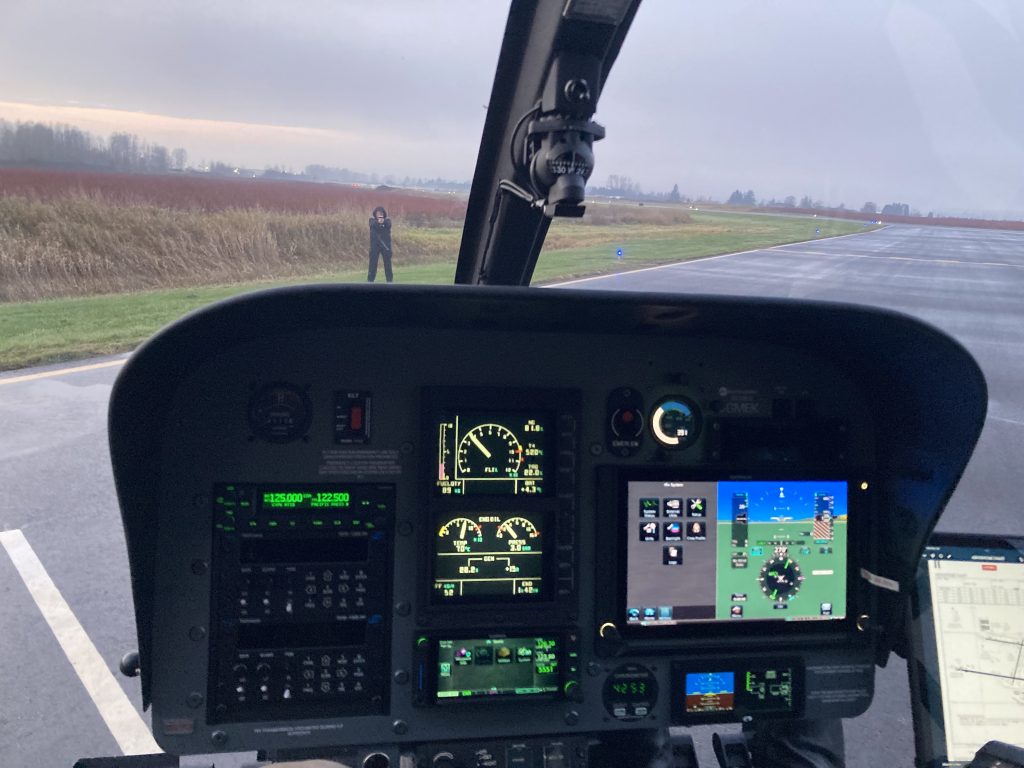
The secondary means of VHF communication and navigation is the GNC 255. This nav/comm from Garmin has all the bells and whistles you would expect from a modern digital nav/comm and will provide much needed redundancy for the GTN, as well as allowing the pilots to monitor multiple frequencies.
As Phoenix Heli-Flight provides services for many industries including oil and gas, and search and rescue, these customers want their crews to be able to communicate directly with the flight crew. In order to integrate with these customer’s existing radio infrastructure, two Technisonic TDFM-136Bs were installed. These radios provide digital or analog FM communications on every channel in the 136 to 174 MHz band.
With so many different communication options onboard, the Jupiter Avionics JA94 audio panel will make selecting audio inputs and outputs easy. Designed with multicrew operations in mind, the JA94 allows the pilot or passengers to isolate themselves from each other so the pilot can communicate with ATC while the passenger communicates with ground crews to coordinate aerial work.

In the interest of safety, Phoenix Heli-Flight has had a big focus on upgrading their flight following and tracking system. As many of the areas they operate in are remote areas with little cell phone or coverage from other services, Phoenix has installed the Outerlink Iridium based GPS tracking system in most of their fleet. You can think of these systems as the best of both an ELT and an InReach or Spot type device. The Outerlink CP-3i also records GPS data, barometric pressure, and 3-Axis acceleration.
Another safety addition was Garmin’s GTS 800 traffic advisory system. Operating in the busy oil fields of Alberta, Phoenix Heli-Flight is often flying in high density airspace with a multitude of low level aircraft performing various support services for the oil and gas industry. The GTS 800 combines ADS-B and active traffic targets to display up to 45 targets up to 22 nm away. Traffic can be displayed on the GTN 650 Xi, or on the MFD side of the G500H TXi PFD. In the event of a traffic alert the GTS 800 will provide an ATC-like verbal warning so the pilots can keep their eyes outside looking for the traffic.
The Story:
While many of the projects we choose feature highlight the equipment we install, the real exciting part of this install was the certification work. Since much of this hardware had never been installed on this model helicopter before, a supplemental type certificate had to be developed. Our in-house Design Approval Organization (DAO) was more than capable of taking on this gigantic project. From initial mission scope, to complete design of electrical and mechanical components, to approval and flight testing, Our DAO managed the entire STC development process.
One of the more interesting parts of the certification process for this EC120 was during the night vision testing phase. To simulate a realistic situation where night vision would be required, we completely blacked out our hangar. While this may seem like a simple task, there are many tiny sources of light you don’t even think about that had to be either powered off, or covered up as to not interfere with the night vision goggles. All of the windows on our hangar doors were covered with opaque cardboard, computer monitors were powered off, and even HVAC controls were covered up to make a true zero light environment in our hangar.
After all of this testing in our hangar, and a Transport Canada representative signing off on the modifications test flights began, first with daytime trials to ensure all the avionics were working appropriately, then night trials where the pilots donned their night vision goggles and took off into the darkness where they put our installation to the test. Once these flight tests were completed, a second EC120 was flown from Fort McMurray to Pitt Meadows to receive the same modifications. With all the design work out of the way, downtime for the second, and possibly more aircraft, will be significantly less than the first.
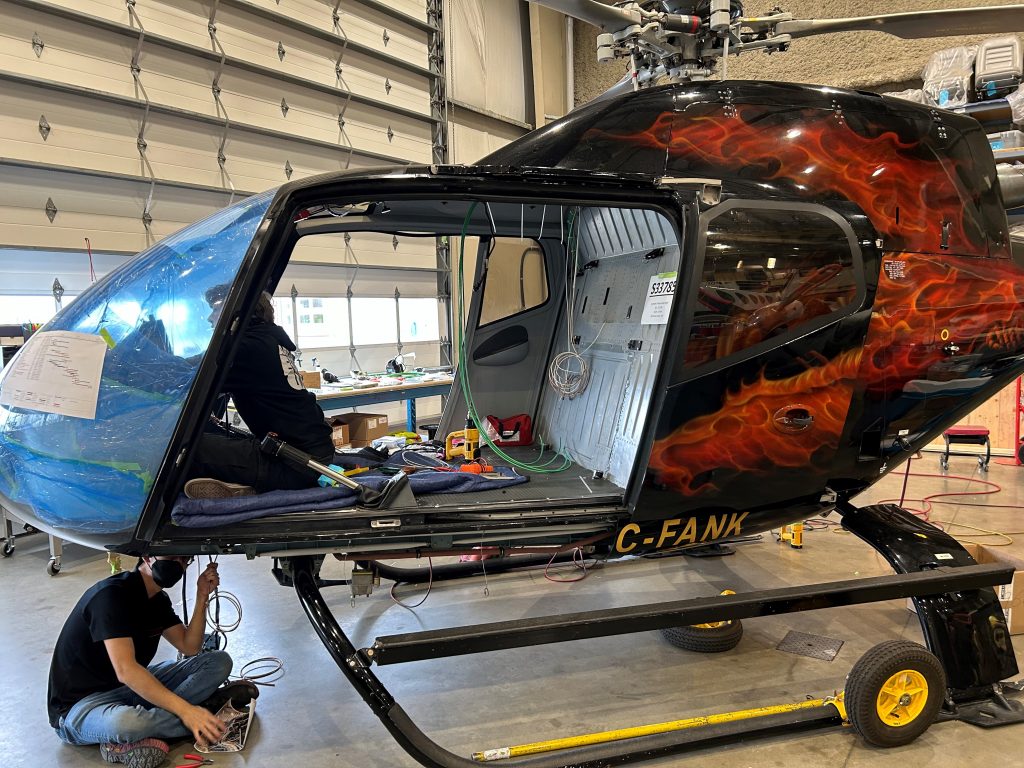
Customer Comments:
“Phoenix is constantly pursuing the latest aviation technology in order to equip our pilots with the most effective tools for completing their flights safely. Our aircraft’s avionics are a central component of this endeavour and Maxcraft is our trusted partner for executing novel and complex upgrade projects. Additionally, the demand for NVG/IFR-capable aircraft and NVG/IFR-trained pilots is growing rapidly and with the help of Maxcraft, we will be prepared to meet it.”
Paul Spring
Owner & President, Phoenix Heli-Flight


